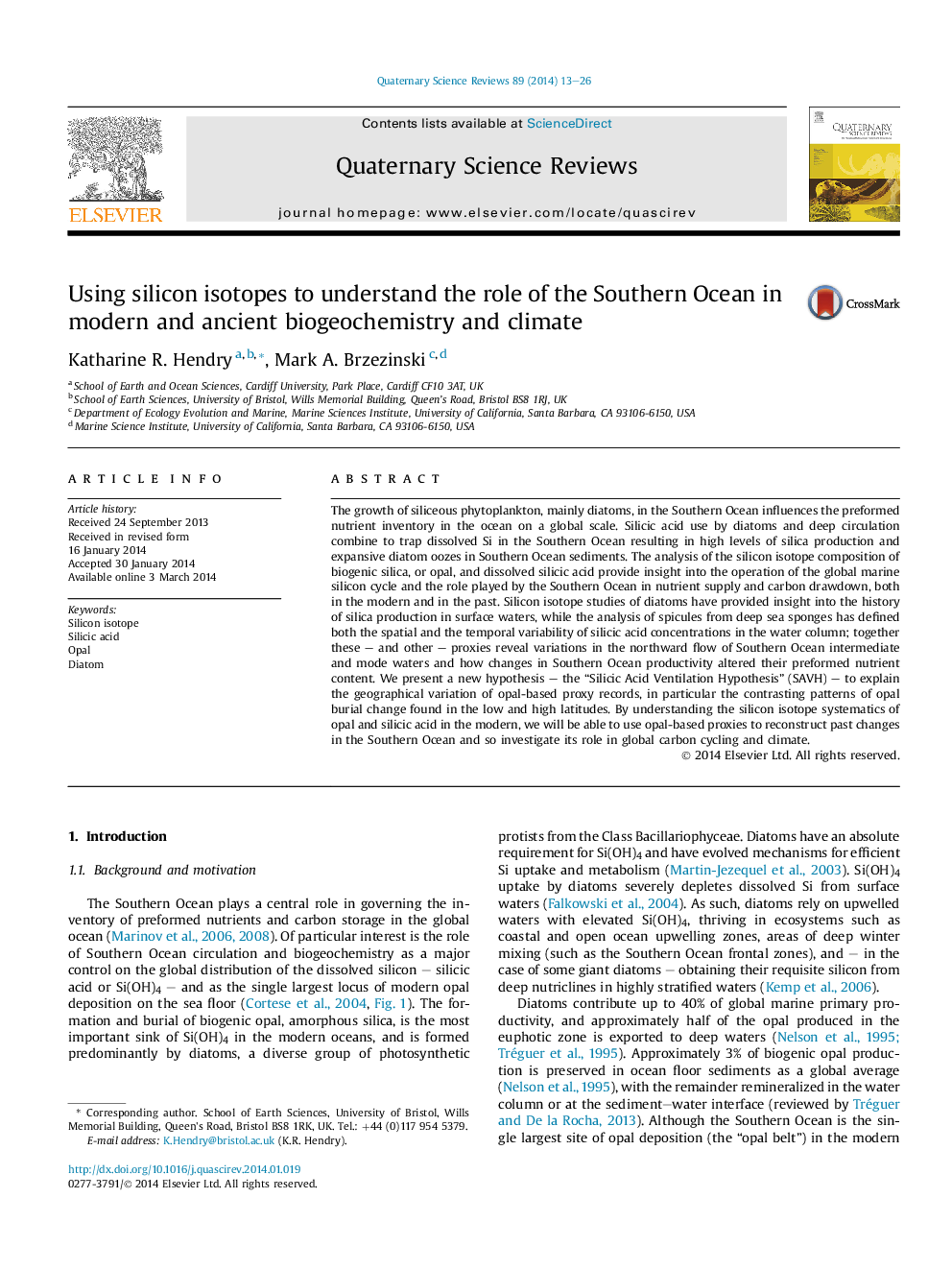| Article ID | Journal | Published Year | Pages | File Type |
|---|---|---|---|---|
| 6446415 | Quaternary Science Reviews | 2014 | 14 Pages |
Abstract
The growth of siliceous phytoplankton, mainly diatoms, in the Southern Ocean influences the preformed nutrient inventory in the ocean on a global scale. Silicic acid use by diatoms and deep circulation combine to trap dissolved Si in the Southern Ocean resulting in high levels of silica production and expansive diatom oozes in Southern Ocean sediments. The analysis of the silicon isotope composition of biogenic silica, or opal, and dissolved silicic acid provide insight into the operation of the global marine silicon cycle and the role played by the Southern Ocean in nutrient supply and carbon drawdown, both in the modern and in the past. Silicon isotope studies of diatoms have provided insight into the history of silica production in surface waters, while the analysis of spicules from deep sea sponges has defined both the spatial and the temporal variability of silicic acid concentrations in the water column; together these - and other - proxies reveal variations in the northward flow of Southern Ocean intermediate and mode waters and how changes in Southern Ocean productivity altered their preformed nutrient content. We present a new hypothesis - the “Silicic Acid Ventilation Hypothesis” (SAVH) - to explain the geographical variation of opal-based proxy records, in particular the contrasting patterns of opal burial change found in the low and high latitudes. By understanding the silicon isotope systematics of opal and silicic acid in the modern, we will be able to use opal-based proxies to reconstruct past changes in the Southern Ocean and so investigate its role in global carbon cycling and climate.
Related Topics
Physical Sciences and Engineering
Earth and Planetary Sciences
Geology
Authors
Katharine R. Hendry, Mark A. Brzezinski,
